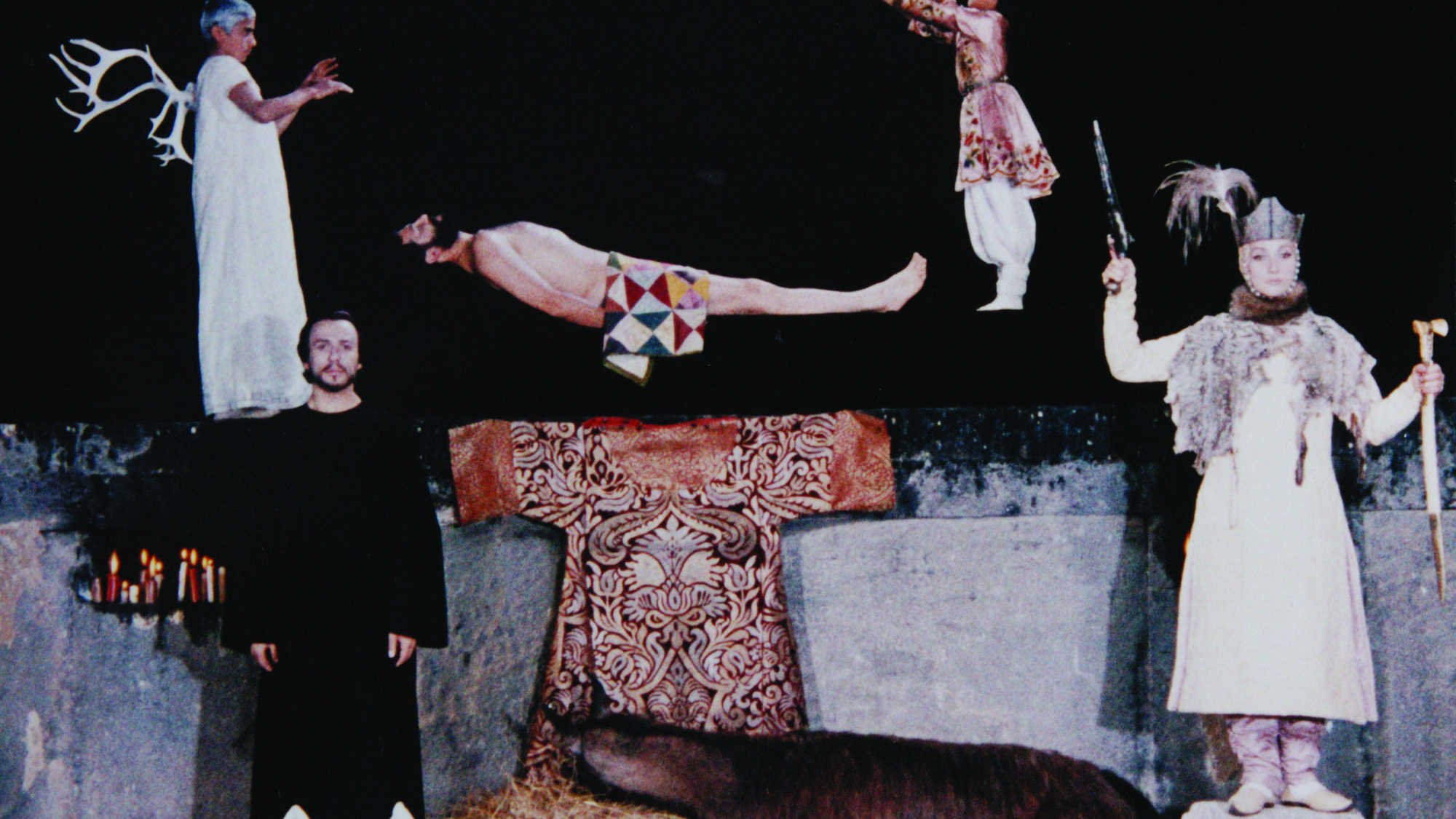The Colour of Pomegranates (Sayat Nova)
Armenia (Soviet Union), 1969. Director Sergei Paradjanov. 79min.One of the most daringly experimental films ever made (and produced in pre-Glasnost Russia, where it was quickly banned), Paradjanov’s tribute to the Armenian poet Sayat Nova rethinks the nature of cinematic space. Woven patterns and colors of traditional textiles and customs provide him with a different visual model. The way in which clothing sculpts and defines the body, creating a space neither flat nor deep but attuned to both the senses of touch and vision, inspires the discontinuous tableaux that make up this film. Textures and colours spill across each other as space dissolves into a succession of surfaces and shapes. Figures, gestures, textiles, costumes, and architecture merge in a shallow but endlessly varied space. Woven and embroidered textiles mould or conceal bodies and space in the rituals of birth and death that compose a film that seems to emanate from another world. “Watching The Color of Pomegranates,” said Martin Scorsese, “is like opening a door and walking into another dimension, where time has stopped and beauty has been unleashed.”
With Sofiko Chiaureli, Melkon Alekyan and Vilen Galstyan.
Past screenings
Wearing Time: Past, Present, Future, Dream – London
Monday 20 March 2017, 18:30 | Curzon, Bloomsbury
A recent 4K digital restoration by Cineteca di Bologna and The Film Foundation’s World Cinema Project. With introduction by Alice Rawsthorn.
Wearing Time: Past, Present, Future, Dream – New York
Sunday 15 April 2018, 17:30 | Museum of the Moving Image

